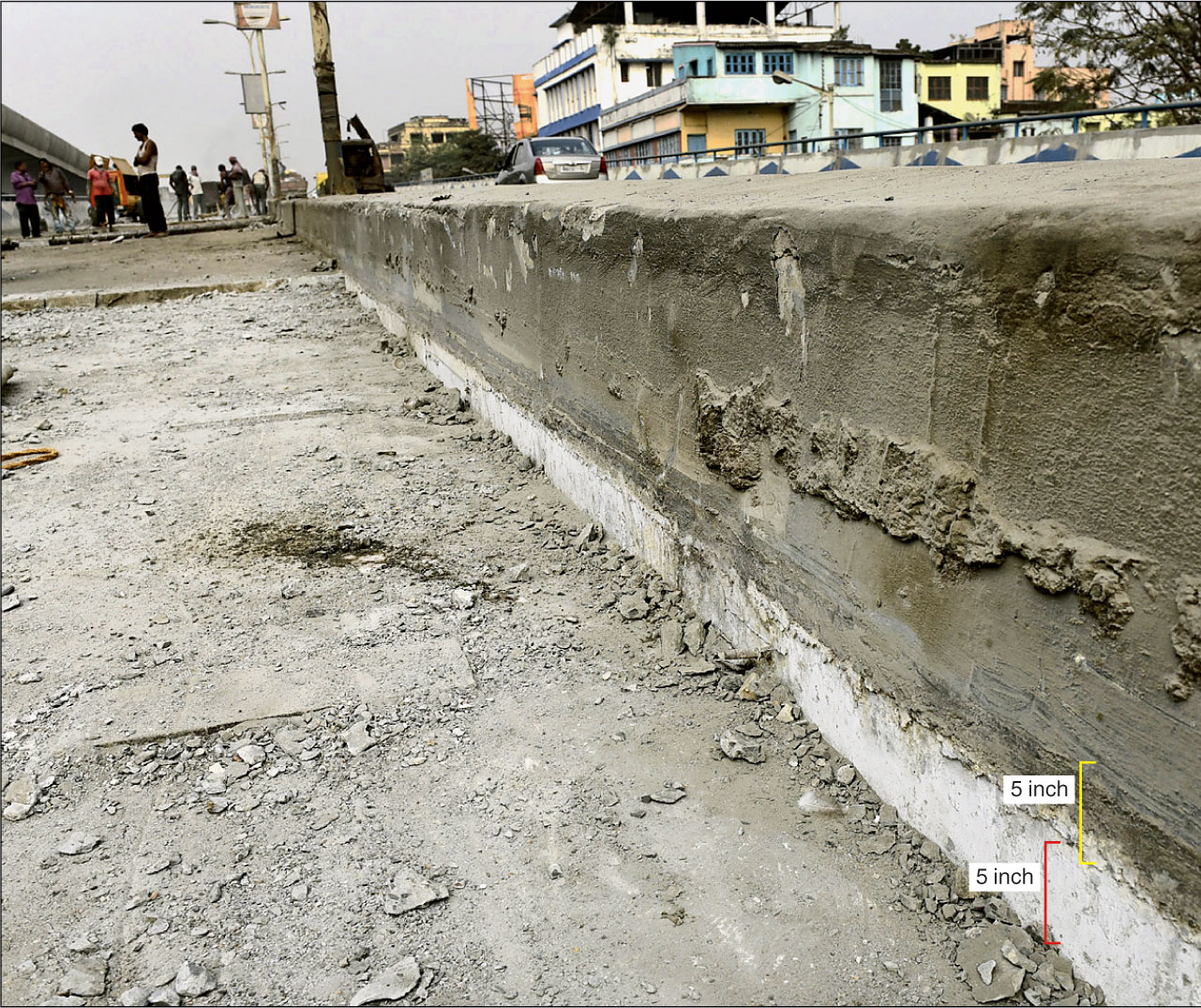The Taratala flyover will be 1,800 tonnes lighter by the end of this month as the public works department has embarked on a project to remove 10 inches of bitumen and concrete layers from the structure that became operational in 2006.
A PWD engineer said engineering consultant Rites, a subsidiary of the railways, had recommended the removal of the load following an assessment of the health of the flyover.
The addition of layers of bitumen over the decades is believed to be one of the reasons for the collapse of the Majerhat bridge in September 2018.
Several bridge engineers had then said rampant addition of bitumen layers without removing the older ones was threatening the stability of flyovers and bridges by increasing the load on the pillars supporting the structures.
“We are removing 1,300 tonnes of concrete and 1,200 tonnes of bitumen, each around 5 inch thick, from the Taratala flyover. The surface will be paved with a fresh bitumen layer and that will add 700 tonnes to the structure. So, when work ends, the flyover will be lighter by 1,800 tonnes,” said a PWD official.
No more concrete layer will be added, he said.
The department is removing the bitumen and concrete layers from the Majerhat-bound flank of the 540metre-long flyover.
Work on the other flank was over before Durga Puja. Each flank is 7metre wide.
“We removed the bitumen topcoat first. The concrete wearing course below the bitumen was found broken. That is being removed, too,” the official said.

A man scraps off the top layer from the bridge on Tuesday. Picture by Sanat Kumar Sinha
A bridge engineer associated with a private construction company told Metro that a “wearing course” was meant to protect the deck slab.
The deck slab and girders together take the load of vehicles plying on a bridge or a flyover and transfer the load to the soil through the piers.
“The wearing course can be of concrete or bitumen. It seems the concrete wearing course on the Taratala flyover was not removed when it got damaged. Instead, layers of bitumen were added over it,” the engineer said after this newspaper sent him some pictures of the flyover as it exists now.
“It is natural for a wearing course to develop cracks.... Ideally, a wearing course should be removed every time it gets damaged and before a fresh wearing course is laid,” the engineer said.
“We started work on the Majerhat-bound flank on November 20. Hopefully the layers will be removed and a fresh bitumen coat laid by December 20,” the PWD official said.
Majerhat-bound vehicles are using the Behala-bound flank of the flyover, while Behala-bound vehicles are taking the road below.
Worn-out expansion joints of the flyover are being replaced as part of the overhaul.
Another senior official of the PWD said similar load-removal work would soon start on the Belgachia bridge.

